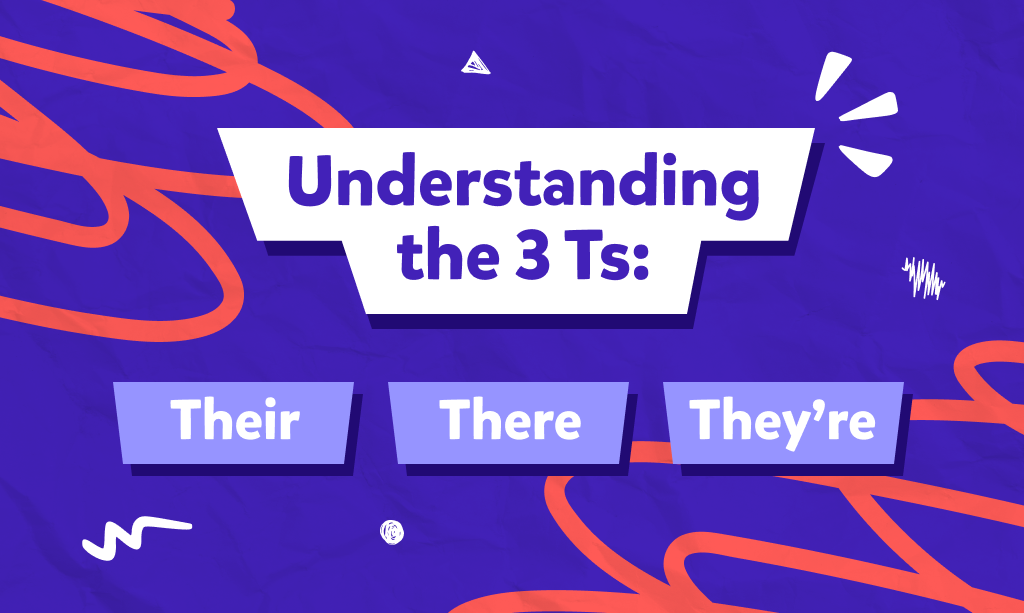Master the distinctions between ‘there,’ ‘their,’ and ‘they’re.’ Enhance your writing clarity and language by understanding when and how to use each term correctly.
Have you ever found yourself confused about when to use “there,” “their,” or “they’re”? If so, don’t get too discouraged. It’s a very common source of confusion in English communication. However, understanding these distinctions is vital for clear and effective communication. In this article, we’ll discuss the nuances of “there,” “their,” and “they’re,” explore why it’s essential to grasp these differences, and provide a straightforward overview of when to use each one.

There, Their, and They’re
The confusion between “there,” “their,” and “they’re” often stems from their similar pronunciation but distinct meanings. “There” typically refers to a place or indicates the existence of something. On the other hand, “their” is a possessive pronoun used to show ownership. Finally, “they’re” is a contraction of “they are.”
Understanding the disparities between the 3 T’s is fundamental for clear communication in both spoken and written English. Misusing these terms can lead to confusion and undermine your message. By mastering their usage, you can convey your ideas more precisely and confidently. Throughout this article, we’ll explore practical examples and guidelines to help you navigate!
Breaking Down the Trio
In English, three similar-sounding words often cause a lot of confusion for learners: “there,” “their,” and “they’re.” While they sound exactly alike, they have different meanings and uses. To begin with, let’s explore each one to clear up any confusion.
“There“: The first form of word usage is “there.” This word usually refers to a place or indicates existence. For example, “The beach is over there,” or “There are many flowers in the garden.”
“Their“: The second form of word usage is “their.” Use this word to show possession or ownership by a group of people. For instance, “The students left their books on the table.”
“They’re“: The final form of usage is “they’re.” This is a contraction of “they are.” It’s used to describe the actions or qualities of a group of people. For example, “They’re going to the movies,” or “They’re happy about the news.”
Understanding the differences between these three words is essential for clear communication. By knowing when to use “there,” “their,” and “they’re” correctly, you can avoid confusion and express yourself more effectively in both writing and speech.
Common Mistakes and Pitfalls
Now, let’s talk about how these three words can be difficult and the most common mistakes to watch out for. Confusion often arises when writers or speakers use “there,” “their,” or “they’re” interchangeably without considering their meanings. Sentences with multiple instances of these words can be challenging, as it may not always be clear which one to use in each context.
Misusing “there,” “their,” or “they’re” can lead to confusion in communication. Readers or listeners may struggle to understand the intended meaning of a sentence without understanding the differences between the three. Using the wrong word can affect the clarity and professionalism of written documents or spoken conversations, potentially undermining the credibility of the speaker or writer.
To avoid these common mistakes and pitfalls, consider these tips:
- Take time to review and understand the distinct meanings and uses of “there,” “their,” and “they’re” through examples and exercises.
- Proofread your writing to ensure that you have used the correct word in each context. Pay special attention to sentences with multiple instances of these words.
- Increase your awareness of mistakes by actively seeking feedback from peers or instructors and incorporating corrections into your practice.
- Practice using “there,” “their,” and “they’re” in various contexts to reinforce your understanding and improve your ability to use them correctly in real-life situations.
Exercises for Mastery
To master the usage of there, their, and they’re, our biggest advice is to practice, practice, practice! The more you hear the word in different contexts and use it in writing practices, the easier it will be for you to differentiate between the three and master their understanding.
Here are some tips for more help:
Sentence completion exercises for each term
Create sentences with gaps where “there,” “their,” or “they’re” should be inserted. For example, “______ are going to the movies,” “The dogs left _____ toys in the yard,” and “Look over ______, I see a rainbow!”
You can also provide a list of sentences with incorrect usage of “there,” “their,” or “they’re” and ask students to correct them.
Quizzes to test comprehension and retention
Design quizzes with multiple-choice or fill-in-the-blank questions focusing on the appropriate use of “there,” “their,” and “they’re” in context.
Incorporate scenarios or passages where students must identify and correct errors involving the words.
Additional resources for continued learning
- Online grammar websites or apps that offer interactive exercises and tutorials specifically targeting the usage of “there,” “their,” and “they’re.”
- Grammar workbooks or worksheets with dedicated sections for practicing the correct usage of these words.
- Engage students in group activities such as role-playing or peer editing where they can apply their knowledge of “there,” “their,” and “they’re” in real-life scenarios.
- Encourage reading materials, such as children’s books or short stories, that feature examples of proper usage of these words to reinforce understanding through context.
In sum, knowing when to use ‘there,’ ‘their,’ and ‘they’re’ is key for clear writing when learning English as a second language. Get these right, and your communication will be clearer and more polished in no time!






































